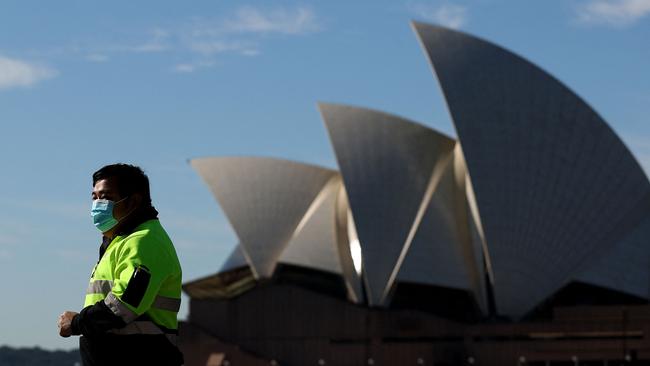Policymakers must focus on rapid Covid-19 vaccine rollout

As is well understood, the main approach Australia has, so far, used to manage the pandemic has been to close its borders to limit the arrival of new cases and then use local contact tracing and movement constraints to deal with the small sporadic outbreaks that have occurred.
The aim has been to keep the virus out of the country and cases of community transmission have been near-zero for much of this year.
At the same time, policymakers have used significant fiscal and monetary policy measures to support households and businesses.
This approach has, until now, been highly successful. After the initial economic shock in early 2020, there was a strong bounce back in economic growth in the three quarters to March 2021. First quarter GDP and employment rose to be back above their pre-pandemic levels.
But the recent outbreak in Greater Sydney is a challenge to this approach, with cases rising rapidly recently.
The testing, tracing and quarantining system in NSW, which was highly effective in reducing case numbers back to zero after the Northern Beaches outbreak over the summer, is now being challenged. In large part this is because the Delta variant transmits more quickly and easily than previous strains.
As a result, state authorities have chosen to use a lockdown of Greater Sydney to seek to contain the outbreak.
Much like the extended lockdown in Victoria in the second half of 2020, which lasted 112 days, the hope is that Sydney’s lockdown, in addition to the testing and tracing systems will, once again, be able to get the cases back to zero.
But if the faster moving and more transmissible Delta strain means this is not possible, then Australia’s approach, effectively an elimination strategy, will come under pressure.
To maintain the current zero tolerance approach to case numbers, other states, like Western Australia and Victoria, would need to maintain closed borders to NSW somewhat indefinitely. In effect, NSW would be treated as another country when it comes to people movement across borders.
This would be easier to do for a smaller state, but more difficult for Australia’s largest state, and given Sydney is the country’s major international hub.
The effects of this approach would reach beyond just a hit to growth in NSW, as extended closure of the borders to that state would disrupt many supply chains and the jobs market.
The contiguous geography of NSW to the states around it will also make it hard to prevent transmission across state borders.
Part of the problem is that Australia has had a slow vaccine rollout. With only 9 per cent of the population double-jabbed, the nation lags well behind comparable Western economies – the full vaccination rates in the UK, US and Canada are 52 per cent, 48 per cent and 45 per cent, respectively.
Given supply constraints we expect that Australia will not be able to reach rates of around 70 per cent vaccination coverage until March 2022, at the earliest.
Although there have been great benefits to being a distant island during a global pandemic, and the elimination strategy it has allowed, there have also been large costs. The benefits have come earlier, while the costs come later.
A key cost is the impact of closed borders, which has stalled tourism, service exports and migration. Another effect of near-zero cases has been complacency which is likely to have slowed the vaccine rollout.
In our view, these costs meant an economic slowdown was on the cards even before the Sydney lockdown, as the effect of stalled population growth started to become more pressing and the fiscal impulse faded.
The Greater Sydney outbreak is a further downside risk for growth, with the scale dependent on the length of the lockdown. NSW Treasury estimates suggest six weeks of lockdown would take 0.25 per cent off GDP. We expect growth to slow significantly in coming quarters.
In addition, if the rapid transmissibility of the Delta variant prevents NSW from getting back to near-zero cases using lockdown, this could see many state borders staying closed and mean no proper reopening until vaccination levels are sufficient to reach herd immunity, which is not likely until early 2022 at the earliest.
The key for policymakers now is a laser-like focus on a rapid vaccine rollout.
Paul Bloxham is HSBC’s chief economist for Australia, New Zealand and global commodities







The arrival of the Delta strain of Covid-19 in the Sydney community may mark a turning point in Australia’s pandemic strategy and contributes to our view that economic growth will weaken markedly in coming quarters.